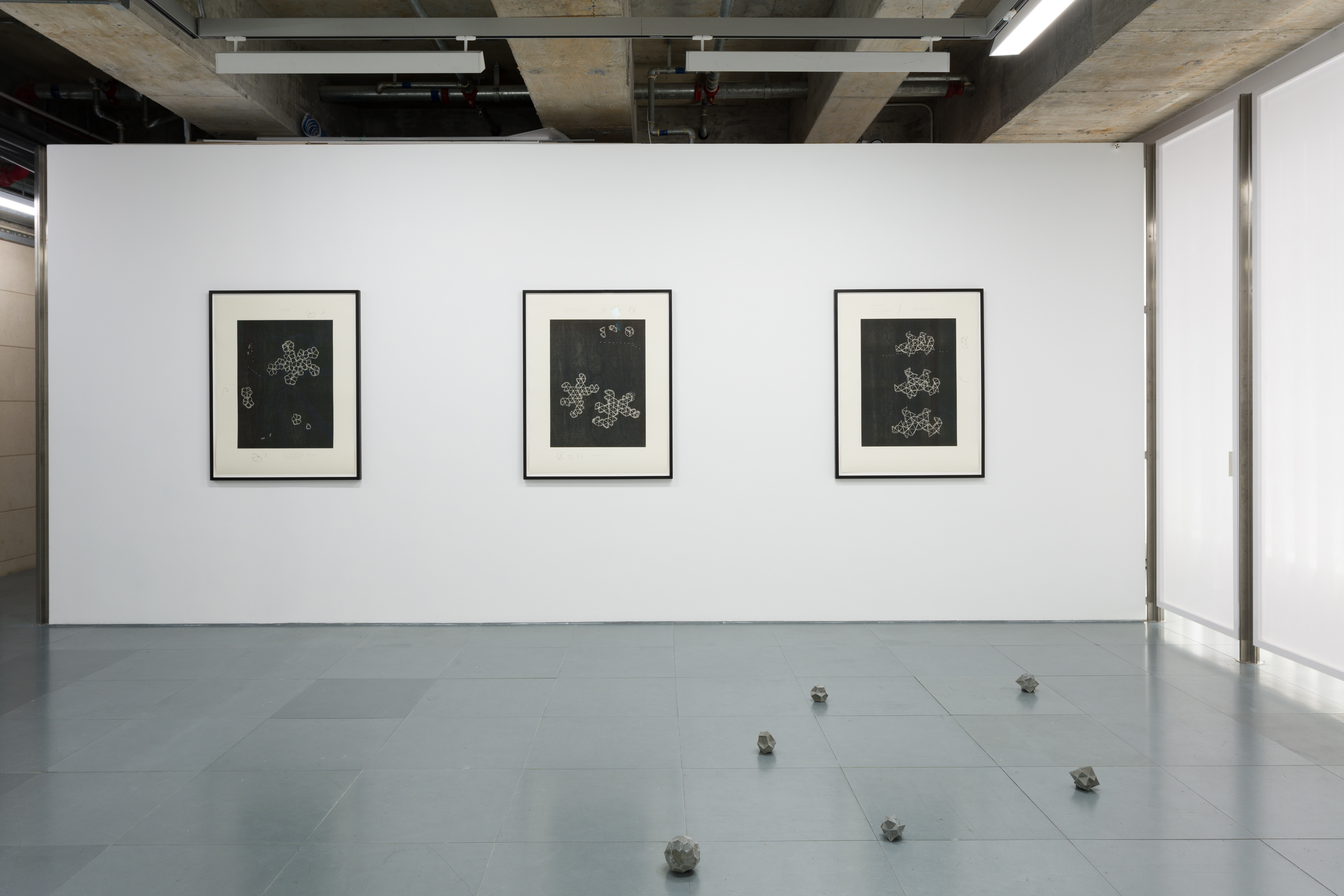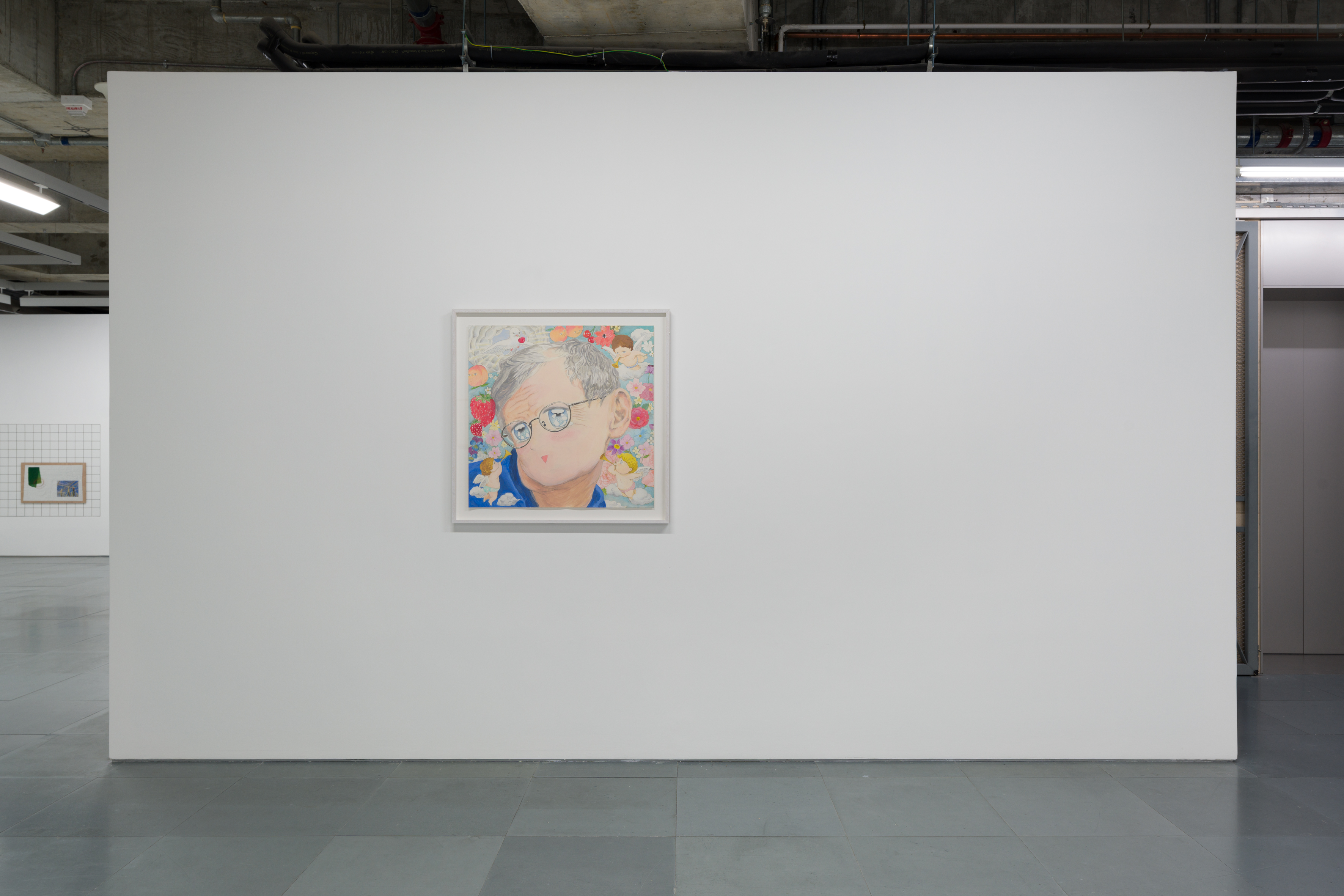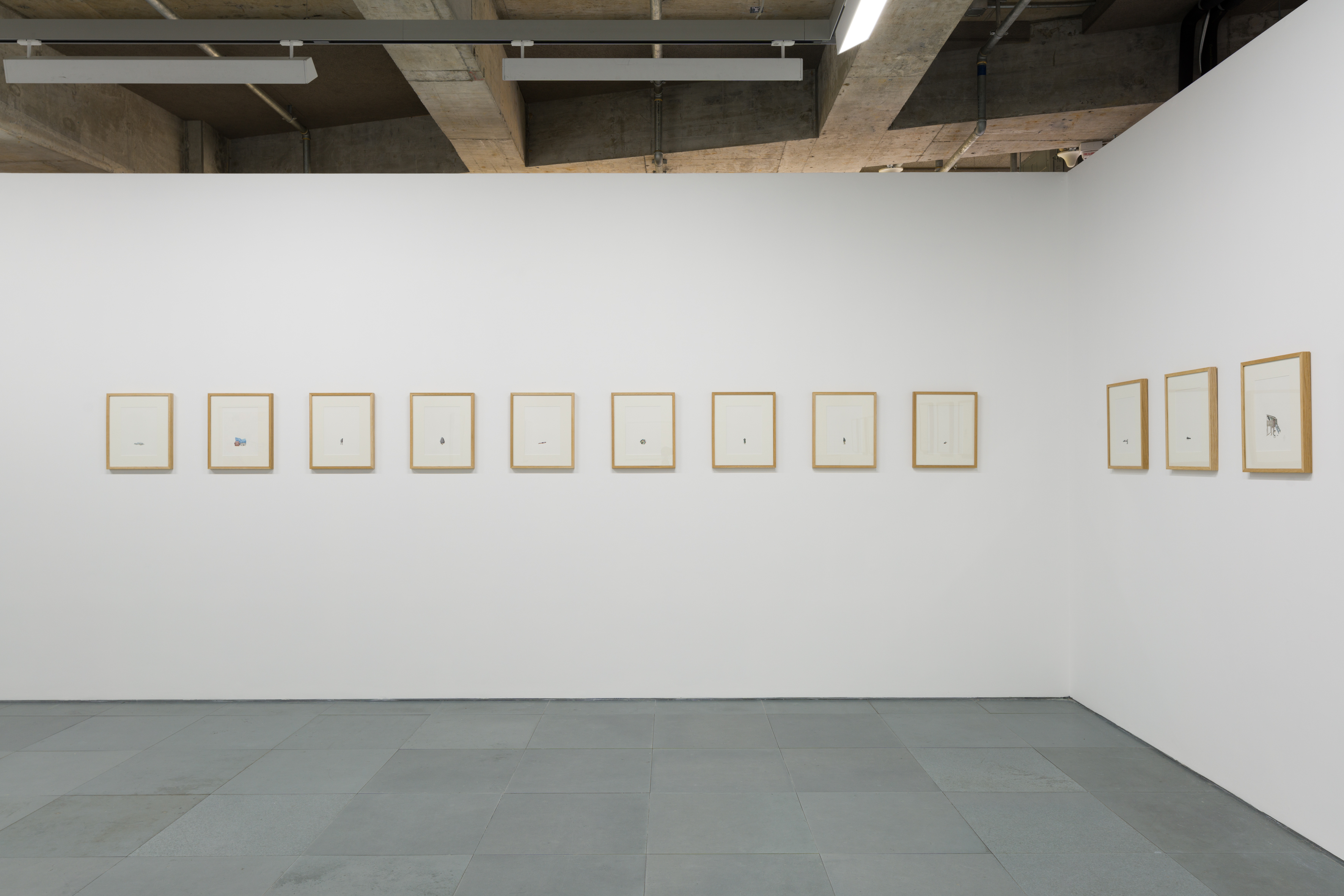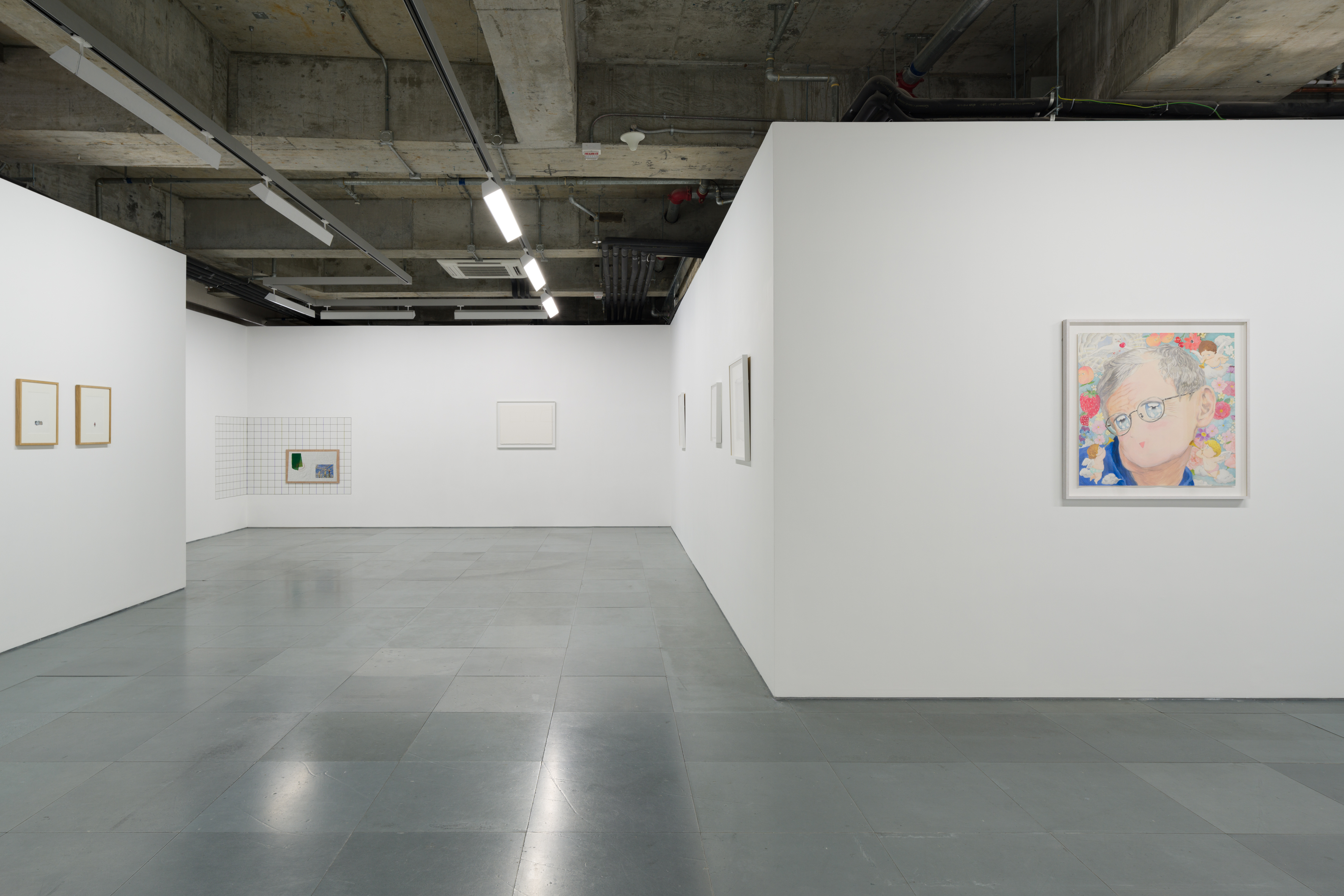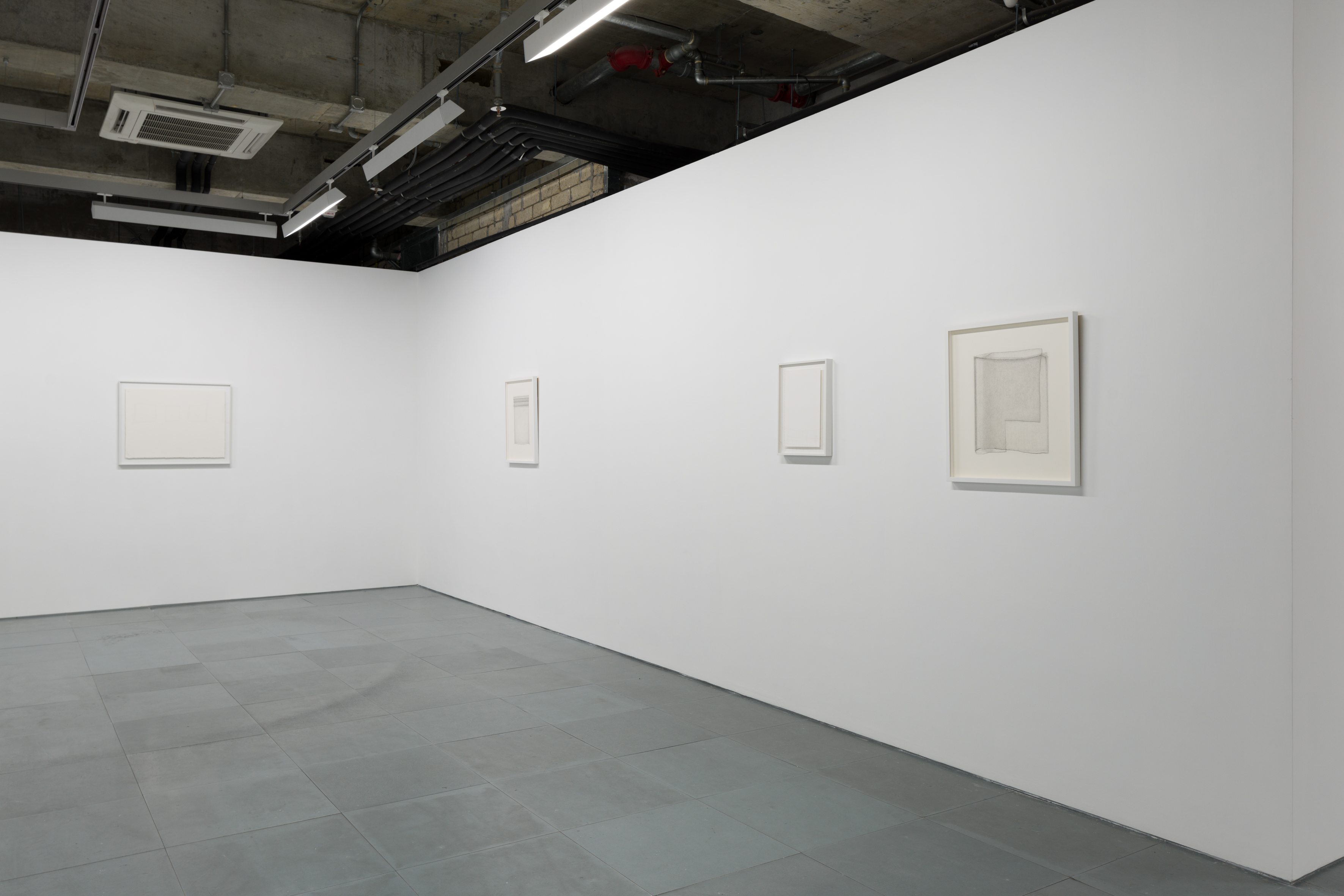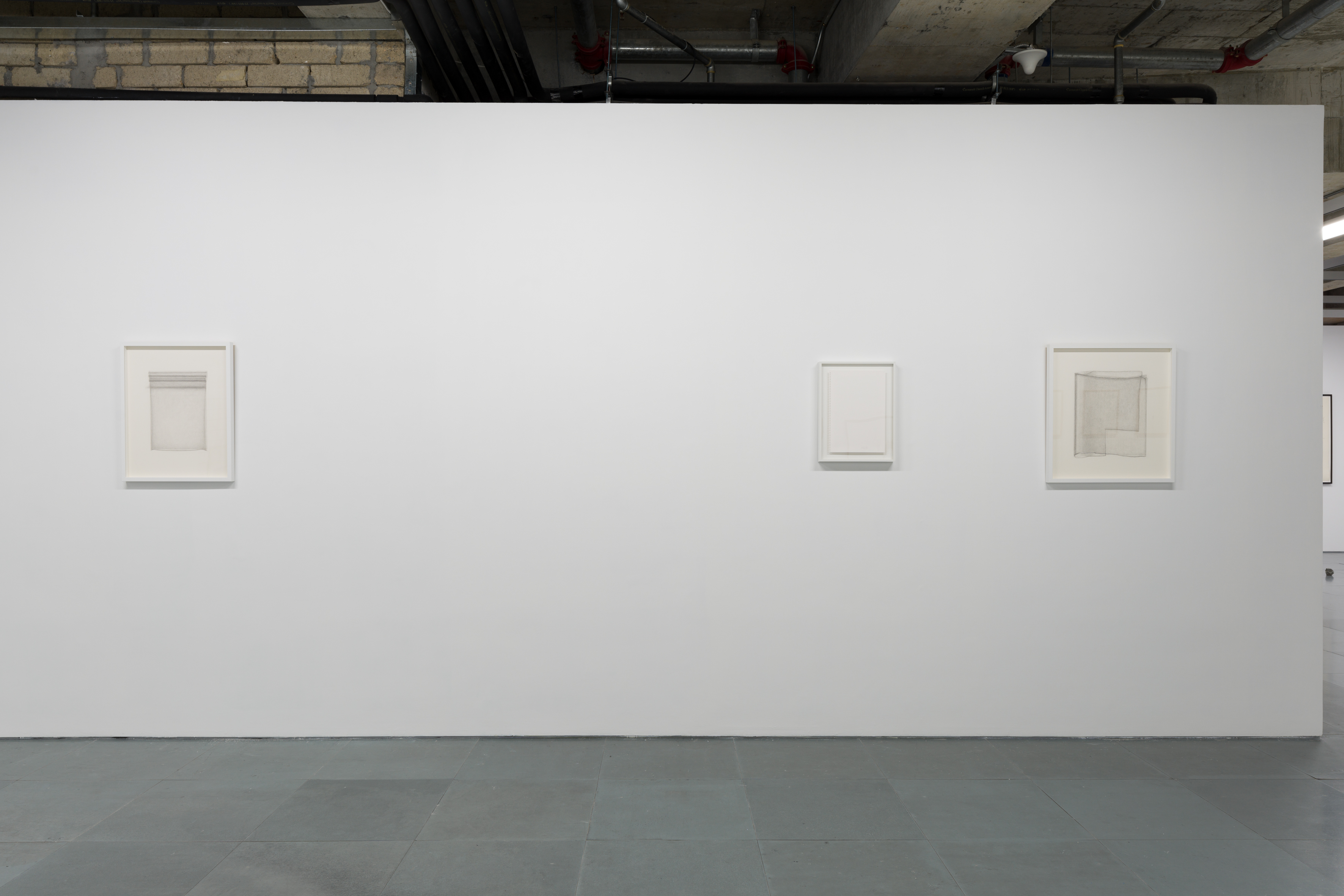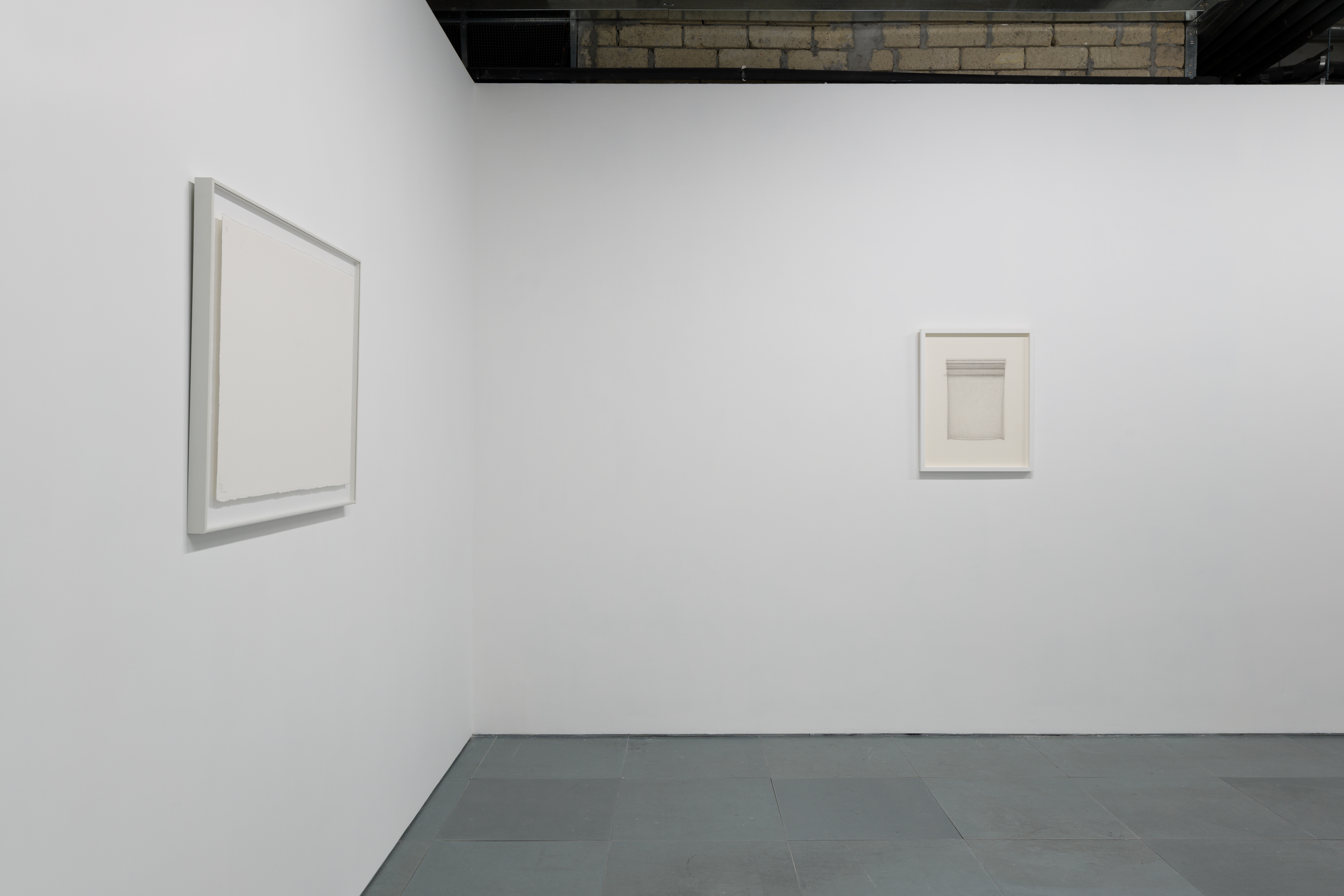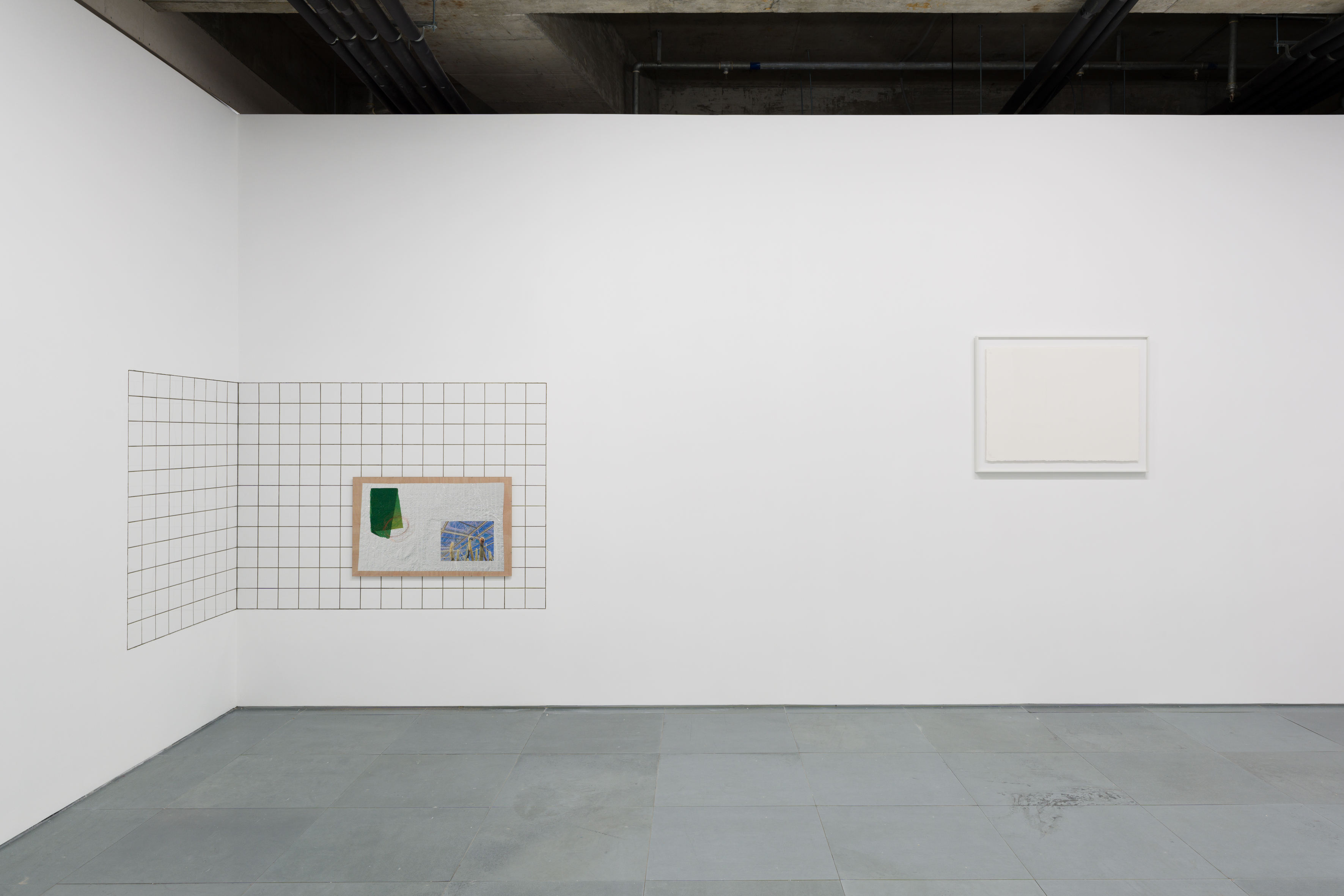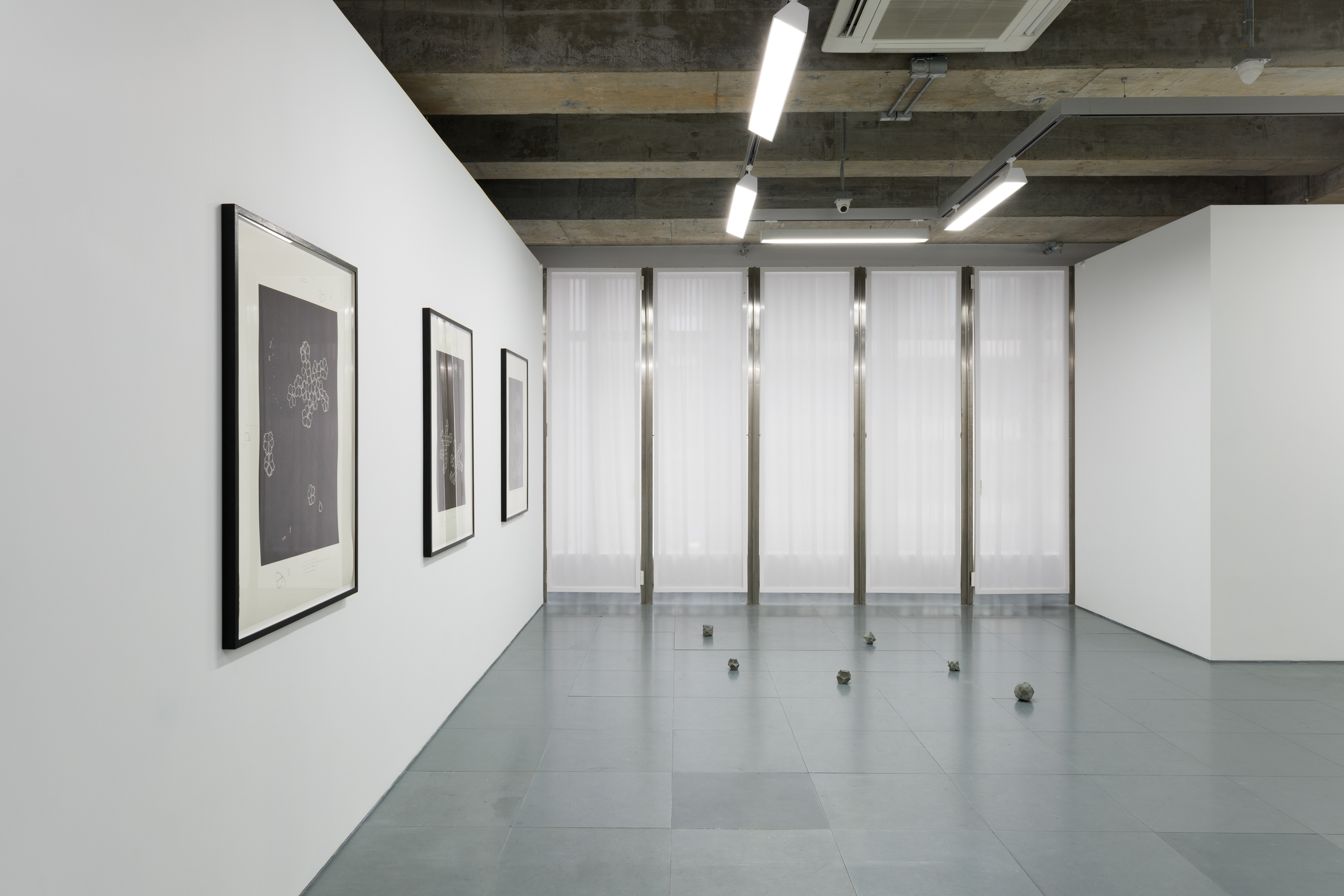‘Folded Veil’ brings together six artists around an exploration of how gestures can conceal reality. Focusing primarily on works on paper and an installation, ‘Folded Veil’ at Edouard Malingue Gallery, Hong Kong prompts one to consider what compels us to make markings, produce symbols, and the intimacies that follow from each encounter. By bringing together the work of Lai Chih-Sheng (b. 1971, Taipei), Kong Chun Hei (b. 1987, Hong Kong), Zhang Ruyi (b. 1985, Shanghai), Liu Yin (b. 1984, Guangzhou), Fabien Mérelle (b. 1981, France) and Ester Fleckner (b. 1983, Denmark), ‘Folded Veil’ presents an array of approaches, each reflecting metaphysical mental realities that are often subdued or go unnoticed. As such, viewers are led to question prescribed notions of the quality and meaning of materials, and in this subversion probed to contemplate a diversity of existences.
Creating a minimalist, atypical reality within everyday circumstances, Lai Chih-Sheng’s artwork has a site-specific quality, involving concepts of labour and consumption, which raises questions about art and its production. Extending the tradition of self-reflexivity seen in conceptual art, Lai’s recent work responds to the contemporary art world’s reliance on display systems of self-reference in an exploration of minute perceptions. In ‘Drawing Paper’ (2012, 2016), Lai draws the viewer’s attention to the subtle and distinctive features of the material itself – the thickness and evenly spaced-out rounds of a sketchbook leaflet and the hand torn edges and watermarks on a sheet of Arches Aquarelle watercolour paper.
Kong Chun Hei pursues a practice that spans drawing, video, animation and installation. Interested in meddling with the operations and structures of matter, Kong subverts the viewer’s notions of everyday objects and materials. ‘Highly Transparent’ (2019), for example, has a hypersensitive, ephemeral quality conveyed through the lightness with which the ink is applied to the watercolour paper. Resembling a delicate cloth, the viewer discovers through the formation other parameters of the materials and expands the realms of possibility for each.
Zhang Ruyi’s artistic practice is centred on the undisclosed relationship between ego consciousness, physical space and mundane experience. By withholding certain “slices” of time and information of the material employed, she is able to capture, replicate, compress, condense or fabricate the materialisation of emotions. She is dedicated to the exploration of both positive and negative friction between individuals and reality, nature and industrial landscape. Taking the relational language of order aesthetics, she suggests the reconstruction of a specific space to be “read,” “questioned,” and “memorised.” Zhang employs objects to question objects and spaces to question spaces, thus resisting the order. In a new work titled ‘A piercing softness’ (2019), Zhang plays with tile and aluminum foil–materials that embody smoothness, pliability, and delicacy with the threat of sharpness.
Liu Yin’s darkly humoured images reflect upon our ever-growing complacent approach to media consumption. The work exhibited, ‘Stephen’s fantasy’ (2015) displays Liu’s approach of sourcing and altering found images. Liu changes what we see through imposing heavily stylised, fantastical, manga-style eyes and backgrounds to these found images, bringing to light the falsity of the image as the bearer of truth in our current age of fast-paced media.
Fabien Mérelle’s drawings depict outworldly scenarios, unsettling situations and dream-like occurrences. In his series of 20 drawings, ‘Untitled’ (2011), Mérelle uses his delicate rendering style to draw the viewer in to what are really depictions of those surviving on the streets. Working on a minute scale against a sparse white background, Mérelle prompts the viewer to individually examine his figures and peer into a world, which from the outset may appear as our own, but upon closer inspection is a rendering of a personal streaming subconscious.
Ester Fleckner’s work explores language and materials in ways that preserve traces of the process and privilege the repetitive labour of trial and error. Working from queer epistemology, Fleckner inverts the value of failure, unfinishedness and displacement to arrive at chaotic and intuitive ways of knowing. Fleckner uses the medium of woodcut printing in an exploration of the collisions between the body and various cultural norms, with fragments of text or drawing often added in pencil as interaction or dialogue with graphic forms. In her series, ‘All models are wrong, some are useful’ (2017), these imprecise, explorative woodcuts communicate in the space with small concrete sculptures mimicking the polyhedrons graphically portrayed in ink and pencil.
Ultimately, ‘Folded Veil’ unravels different approaches to the acts of concealing, revealing and fundamentally, seeing.
Folded Veil Group Show
